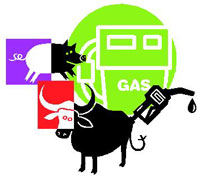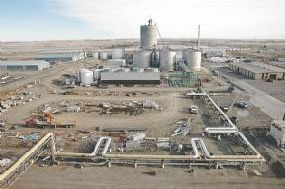 The American Corn Growers Association has received some grants from Farm Aid to put on a series of workshops across the country on producing and using ethanol, biodiesel, and wind energy. The Farm Aid money has been given to the Corn Growers to put on the workshops in more than half a dozen states on a variety of subjects:
The American Corn Growers Association has received some grants from Farm Aid to put on a series of workshops across the country on producing and using ethanol, biodiesel, and wind energy. The Farm Aid money has been given to the Corn Growers to put on the workshops in more than half a dozen states on a variety of subjects:
* Overview of Bio-Diesel Production, Acceptance and Utilization,
* Overview of Pre-Feasibility Study Guide for Farmer-Owned Ethanol Plants,
* Wind Energy – New Potentials for Rural Communities,
* Overview of Federal Programs Available for Renewable Energy Production, and
* How Renewable Energy Production Can Be an Essential Component to Better Farm Policy.
“Our goal is to ensure we improve our continuing endeavor to communicate, educate and advocate the opportunities, challenges and possibilities for energy production on U.S. family farms,” said ACGA President Keith Bolin. “This will include issues relating to bio-diesel, ethanol, bio-mass, wind and other farm based energy producing possibilities.”
“Farm Aid is proud to support so many creative efforts around the country to expand opportunities for family farmers,” said Farm Aid President Willie Nelson. “We’re all working together to support good food from family farms.”
Stay tuned for dates and locations.






 America used more gasoline in 2006, but that increase was entirely offset by ethanol.
America used more gasoline in 2006, but that increase was entirely offset by ethanol. This week’s
This week’s  An ethanol plant under construction in North Dakota will be first plant in the country to use steam from a nearby power plant to generate heat instead of having its own boilers.
An ethanol plant under construction in North Dakota will be first plant in the country to use steam from a nearby power plant to generate heat instead of having its own boilers.